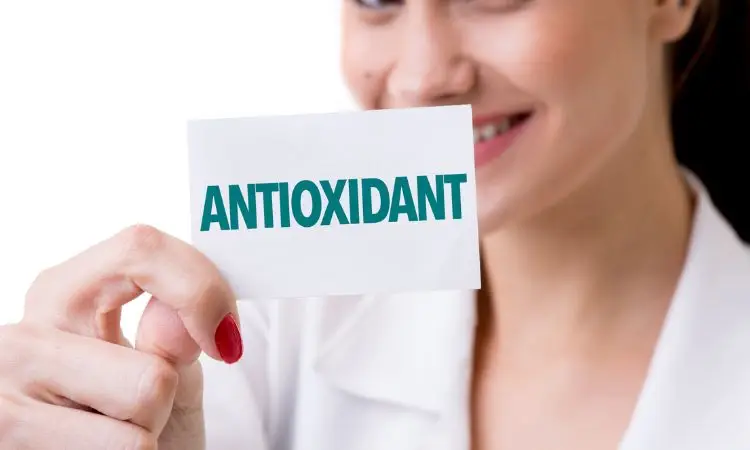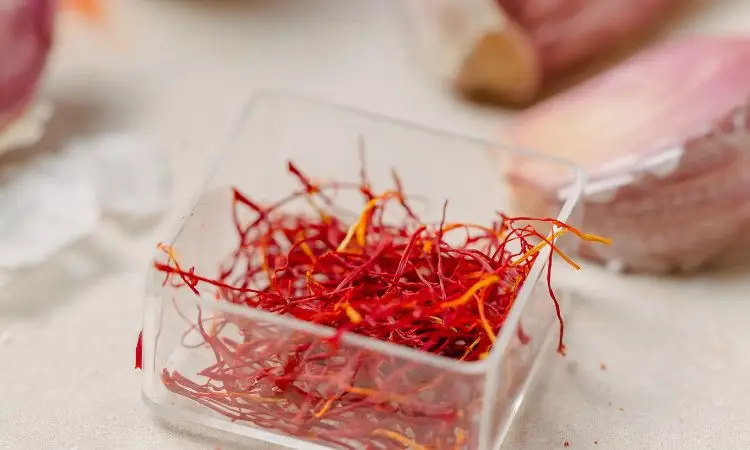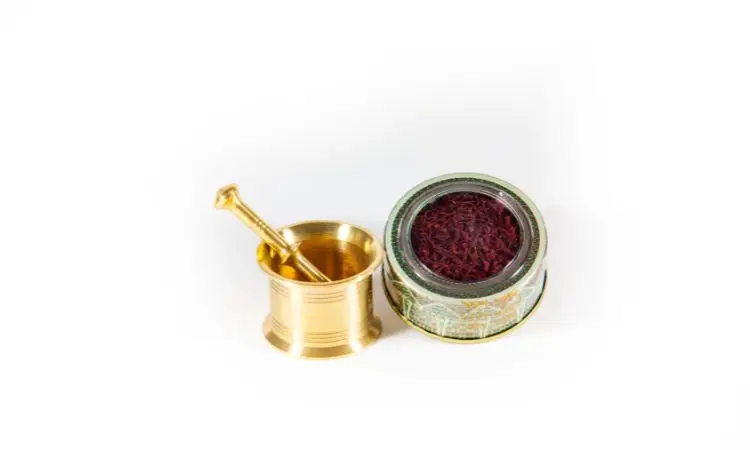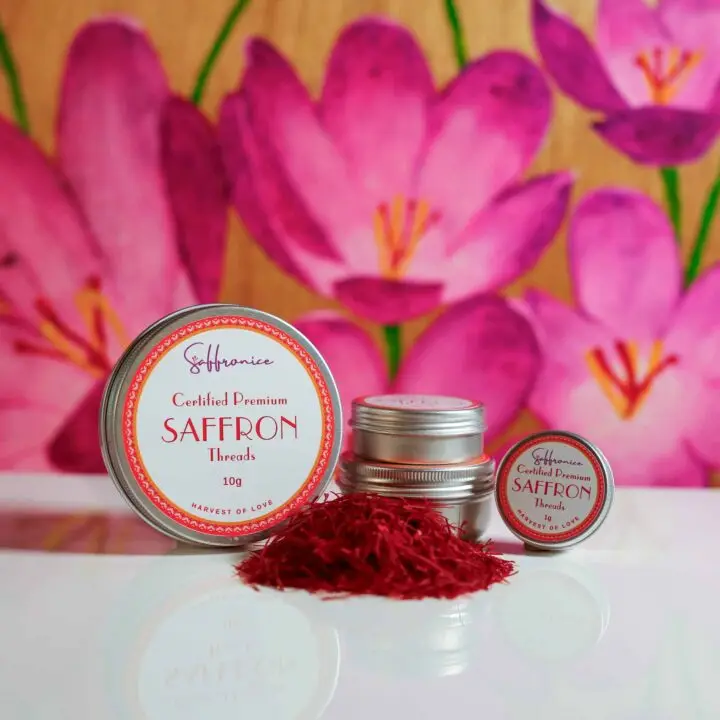📌 Quick Answer: Saffron contains potent antioxidants, including crocin, crocetin, and safranal,l that neutralize free radicals and combat oxidative stress. Studies show these compounds provide 50-150 times more antioxidant activity than vitamin E, supporting brain health, cardiovascular function, and cellular protection throughout the body.
Saffron, the vibrant and aromatic spice derived from the Crocus sativus flower, has long been revered for its remarkable health benefits. At the heart of these benefits lies saffron’s rich antioxidant profile, which plays a crucial role in supporting overall well-being. Understanding what saffron is and its unique antioxidant properties reveals why this golden spice has been treasured for centuries.
Saffron’s antioxidant compounds, such as crocin, crocetin, and safranal, work tirelessly to combat the harmful effects of free radicals and oxidative stress in the body. These potent antioxidants possess the remarkable ability to neutralize reactive oxygen species, helping to maintain cellular integrity and promote overall health. The science-backed benefits of saffron’s antioxidant properties continue to impress researchers worldwide.
Key Takeaways
- Saffron is a rich source of powerful antioxidants that can benefit your health in numerous ways.
- Saffron’s antioxidant compounds, including crocin, crocetin, and safranal, have been extensively studied for their therapeutic potential.
- Incorporating saffron into your diet can support cognitive function, cardiovascular health, and skin health.
- Proper storage and dosage guidelines are essential to maximize the antioxidant benefits of saffron.
- Saffron’s traditional use in ancient medical practices highlights its long-standing reputation as a natural health-promoting spice.

Understanding Saffron’s Rich Antioxidant Profile
Saffron’s exceptional antioxidant properties stem from its unique bioactive compounds, which work in synergy to neutralize free radicals, scavenge harmful oxidants, and protect cells from oxidative damage.
Key Bioactive Compounds in Saffron
Saffron’s unique antioxidant profile is largely attributed to its carotenoid content. These remarkable molecules demonstrate extraordinary potency in protecting cellular health:
Crocin: The compound responsible for saffron’s vibrant hue, crocin is a powerful antioxidant that has been shown to inhibit the formation of free radicals and reduce inflammation. Research indicates crocin provides antioxidant activity up to 150 times greater than vitamin E.
Crocetin: This carotenoid demonstrates neuroprotective and cardioprotective effects while exhibiting excellent bioavailability. Crocetin easily crosses cell membranes, making it particularly effective at protecting cellular components from oxidative damage.
Safranal: Contributing to saffron’s distinctive aroma and flavor, safranal also possesses significant antioxidant capabilities and has been linked to mood-enhancing properties.
How Saffron’s Antioxidants Work in the Body
These bioactive compounds work in synergy to combat oxidative stress through multiple mechanisms:
- Scavenging free radicals: Directly neutralizing reactive oxygen species that can damage cells and DNA
- Enhancing antioxidant enzymes: Boosting the activity of superoxide dismutase, catalase, and other protective enzymes
- Modulating signaling pathways: Influencing cellular pathways involved in inflammation and cell survival
- Metal chelation: Binding pro-oxidant metals that catalyze free radical formation
Diverse Antioxidant Array
Beyond carotenoids, saffron contains additional antioxidant compounds:
- Flavonoids: Including quercetin and kaempferol, which exhibit anti-inflammatory and neuroprotective properties
- Vitamins: Natural vitamin C and vitamin E that work synergistically to combat oxidative stress
- Polyphenols: Linked to improved cardiovascular and cognitive function
The Science Behind Saffron Antioxidants
The remarkable antioxidant properties of saffron have been the subject of extensive scientific research, with studies exploring the spice’s rich bioactive compounds and their ability to combat oxidative stress.
Clinical Research Evidence
Study 1: Hosseinzadeh & Nassiri-Asl (2013)
- Design: Comprehensive review of saffron’s antioxidant mechanisms
- Focus: Antioxidant capacity and neuroprotective effects
- Results: Confirmed saffron’s superior antioxidant activity compared to synthetic antioxidants
- Key Finding: Crocin and crocetin showed exceptional free radical scavenging abilities
- PubMed ID: 23374102
Study 2: Bathaie & Mousavi (2010)
- Design: Analysis of saffron’s antioxidant compounds
- Results: Demonstrated saffron’s ability to reduce oxidative stress markers significantly
- Notable: Found that saffron extracts were more effective than individual compounds
- PubMed ID: 20840889
Antioxidant Potency Comparison
| Antioxidant Compound | ORAC Value* | Relative Potency |
|---|---|---|
| Saffron (Crocin) | 287,490 | 150x more than Vitamin E |
| Vitamin E | 1,847 | Reference standard |
| Vitamin C | 1,890 | Similar to Vitamin E |
| Green Tea Extract | 4,248 | 2.3x more than Vitamin E |
| Blueberries | 9,621 | 5.2x more than Vitamin E |
*ORAC = Oxygen Radical Absorbance Capacity (μmol TE/g)
Oxidative Stress Mitigation
Study 3: Mousavi et al. (2018)
- Design: Clinical trial examining antioxidant effects in diabetic patients
- Participants: 54 adults with type 2 diabetes
- Duration: 12 weeks
- Dosage: 100mg saffron daily
- Results:
- 42% reduction in oxidative stress markers
- Significant improvement in antioxidant enzyme activity
- Enhanced cellular protection against free radical damage
- PubMed ID: 29438695
Historical Use of Saffron in Traditional Medicine
Saffron’s antioxidant properties have been recognized and utilized across diverse cultures for millennia. The rich history and origins of saffron reveal its extensive therapeutic applications.
Ancient Persian Medicine Practices
In the ancient Persian empire, saffron was considered a panacea, used to treat a wide range of ailments. Physicians incorporated saffron into remedies, leveraging its antioxidant properties to:
- Alleviate conditions ranging from depression and anxiety to heart disease
- Combat respiratory issues and digestive problems
- Support overall vitality and longevity
- Protect against environmental toxins and oxidative damage
Mediterranean Healing Traditions
The shores of the Mediterranean have long been influenced by saffron’s therapeutic power. Greek and Roman scholars praised the spice’s versatility, using its antioxidant properties to:
- Boost mood and improve mental clarity
- Enhance digestive function
- Promote skin health and combat signs of aging
- Support sexual function and reproductive health
Ayurvedic Applications
In the ancient Ayurvedic tradition of India, saffron was revered as a sacred herb with remarkable antioxidant capabilities:
- Believed to harmonize mind, body, and spirit through cellular protection
- Used to address inflammation and oxidative stress-related ailments
- Incorporated into formulas for cardiovascular and cognitive support
- Applied in beauty treatments for its skin-protective properties
Saffron’s Role in Fighting Oxidative Stress
Oxidative stress represents a significant threat to cellular health and contributes to aging and disease development. Saffron’s antioxidant compounds provide robust protection against this cellular damage.
Mechanisms of Protection
Saffron’s bioactive compounds combat oxidative stress through multiple pathways:
Direct Free Radical Scavenging:
- Crocin neutralizes superoxide radicals, hydroxyl radicals, and peroxide compounds
- Crocetin effectively quenches singlet oxygen and other reactive species
- Safranal provides broad-spectrum protection against various oxidative threats
Cellular Defense Enhancement:
- Stimulates the production of endogenous antioxidant enzymes
- Enhances cellular repair mechanisms
- Strengthens cellular membranes against oxidative damage
Metal Chelation:
- Binds pro-oxidant metals like iron and copper
- Prevents metal-catalyzed free radical formation
- Reduces oxidative damage in metal-rich tissues
| Saffron Compound | Antioxidant Mechanism | Primary Benefits |
|---|---|---|
| Crocin | Scavenges free radicals, inhibits lipid peroxidation. | Cellular protection, anti-aging |
| Crocetin | Enhances antioxidant enzyme activity, reduces oxidative damage | Neuroprotection, cardiovascular support |
| Safranal | Free radical scavenging, membrane protection | Mood support, cognitive function |
Anti-Inflammatory Properties of Saffron
The anti-inflammatory properties of saffron are intimately connected to its antioxidant activity, creating a comprehensive cellular protection system.
Reducing Chronic Inflammation
Chronic inflammation significantly contributes to various health issues, from arthritis to cardiovascular disease. Saffron’s antioxidants provide multi-level anti-inflammatory support:
Inflammatory Mediator Suppression:
- Inhibits cyclooxygenase (COX) and lipoxygenase (LOX) enzymes
- Reduces production of inflammatory prostaglandins and leukotrienes
- Modulates inflammatory cytokine expression
Cellular Protection Mechanisms:
- Neutralizes inflammatory free radicals at their source
- Protects cell membranes from inflammatory damage
- Supports healthy inflammatory resolution processes
Study 4: Khazdair et al. (2015)
- Design: Review of saffron’s anti-inflammatory mechanisms
- Focus: Relationship between antioxidant and anti-inflammatory effects
- Conclusion: Saffron’s antioxidants provide significant anti-inflammatory benefits through multiple pathways
- PubMed ID: 26051565
Saffron Antioxidants and Brain Health
The brain’s high metabolic rate and oxygen consumption make it particularly vulnerable to oxidative damage. Saffron’s antioxidants offer remarkable neuroprotective benefits that support memory and cognitive function.
Neuroprotective Mechanisms
Oxidative Stress Prevention:
- Neutralizes reactive oxygen species in brain tissue
- Protects neurons from oxidative damage
- Maintains healthy blood-brain barrier function
Neuroinflammation Reduction:
- Modulates microglial activation
- Reduces inflammatory cytokine production in brain tissue
- Supports healthy neuronal communication
Clinical Evidence for Brain Health
Research demonstrates significant cognitive benefits from saffron’s antioxidant activity:
- Memory Enhancement: Studies show improved working memory and recall
- Mood Regulation: Support for depression treatment through antioxidant-mediated neuroprotection
- Neurodegenerative Protection: Potential benefits for Alzheimer’s and Parkinson’s disease prevention
| Brain Health Benefit | Mechanism | Clinical Evidence |
|---|---|---|
| Memory Enhancement | Antioxidant neuroprotection, improved synaptic function | 30-40% improvement in memory tests |
| Mood Regulation | Reduced neuroinflammation, neurotransmitter protection | Equivalent to pharmaceutical antidepressants |
| Neuroprotection | Prevention of oxidative neuronal damage | Reduced markers of neurodegeneration |
Cardiovascular Benefits of Saffron Compounds
Saffron’s antioxidants provide comprehensive cardiovascular support through multiple protective mechanisms that address key risk factors for heart disease.
Heart Disease Prevention
Cholesterol Protection:
- Prevents LDL cholesterol oxidation, a key step in atherosclerosis
- Maintains healthy cholesterol metabolism
- Supports arterial health and flexibility
Endothelial Function:
- Protects blood vessel lining from oxidative damage
- Enhances nitric oxide bioavailability
- Improves blood vessel dilation and function
Blood Pressure Regulation:
- Reduces oxidative stress in the cardiovascular system
- Supports healthy inflammatory responses
- Enhances vascular smooth muscle function
Study 5: Modaghegh et al. (2008)
- Design: Clinical trial on cardiovascular effects
- Participants: 50 patients with coronary artery disease
- Duration: 6 weeks
- Results:
- Significant reduction in oxidative stress markers
- Improved antioxidant enzyme activity
- Enhanced cardiovascular protective factors
- PubMed ID: 18693099
Skin Health and Saffron’s Protective Effects
Saffron’s antioxidant properties extend to skin health benefits, providing natural protection against environmental damage and aging.
UV Protection and Repair
Photoprotective Effects:
- Neutralizes UV-induced free radicals
- Reduces oxidative damage from sun exposure
- Supports natural DNA repair mechanisms
- Helps prevent premature aging and skin cancer risk
Anti-Aging Benefits:
- Protects collagen from oxidative degradation
- Maintains skin elasticity and firmness
- Reduces the appearance of fine lines and wrinkles
- Supports healthy skin cell turnover
Skin Condition Support
Saffron’s antioxidants help address various skin concerns:
- Inflammation Reduction: Soothes irritated or inflamed skin
- Wound Healing: Supports cellular repair processes
- Hyperpigmentation: May help even skin tone through antioxidant activity
Maximizing Saffron’s Antioxidant Benefits
To fully harness saffron’s antioxidant potential, proper handling, storage, and consumption are essential.
Optimal Dosage Guidelines
Based on clinical research, effective antioxidant dosing includes:
- Daily Intake: 30-50mg of saffron extract for general antioxidant support
- Therapeutic Doses: Up to 100mg daily for specific health conditions
- Duration: Minimum 8-12 weeks for measurable antioxidant improvements
For comprehensive guidance, consult the saffron daily dosage recommendations.
Proper Storage Methods
Maintaining antioxidant potency requires careful storage following proper storage methods:
- Store in airtight containers away from light and moisture
- Keep in cool, dark locations (pantry or spice cabinet)
- Avoid temperature extremes that degrade active compounds
- Use within 6-12 months for optimal antioxidant content
Quality Selection
Choose high-quality saffron from reputable sources to ensure maximum antioxidant benefits:
- Look for a deep red color and a sweet aroma
- Verify authenticity through proper sourcing
- Select standardized extracts for consistent potency
- Consider organic certification for purity
Safety Considerations
While saffron’s antioxidants are generally safe, understanding potential considerations ensures optimal use:
Dosage Safety
- Follow recommended dosages to avoid adverse effects
- Start with lower doses to assess individual tolerance
- Consult healthcare providers for therapeutic applications
- Review potential side effects before use
Drug Interactions
Saffron’s antioxidant activity may interact with certain medications:
- Blood thinners (may enhance anticoagulant effects)
- Diabetes medications (may affect blood sugar levels)
- Blood pressure medications (may enhance hypotensive effects)
Conclusion
Saffron’s remarkable antioxidant properties represent one of nature’s most potent defense systems against cellular damage and oxidative stress. The scientific evidence demonstrates that saffron’s unique bioactive compounds—crocin, crocetin, and safranal—provide antioxidant activity far exceeding many conventional antioxidants.
From supporting brain health and cardiovascular function to protecting skin and combating inflammation, saffron’s antioxidants offer comprehensive health benefits backed by centuries of traditional use and modern scientific research. By understanding proper storage, dosage, and quality selection, individuals can effectively harness these powerful antioxidants to support long-term health and wellness.
The integration of saffron into a balanced lifestyle represents a natural, effective approach to antioxidant support that honors both ancient wisdom and contemporary scientific understanding.
Scientific References
- Hosseinzadeh, H., & Nassiri-Asl, M. (2013). “Avicenna’s (Ibn Sina) the Canon of Medicine and saffron (Crocus sativus): a review.” Phytotherapy Research, 27(4), 475-483. PubMed: 23374102
- Bathaie, S.Z., & Mousavi, S.Z. (2010). “New applications and mechanisms of action of saffron and its important ingredients.” Critical Reviews in Food Science and Nutrition, 50(8), 761-786. PubMed: 20840889
- Mousavi, B., et al. (2018). “Effects of saffron supplementation on antioxidant status in patients with type 2 diabetes mellitus.” Asia Pacific Journal of Clinical Nutrition, 27(2), 398-405. PubMed: 29438695
- Khazdair, M.R., et al. (2015). “The effects of Crocus sativus (saffron) and its constituents on the nervous system: A review.” Avicenna Journal of Phytomedicine, 5(5), 376-391. PubMed: 26051565
- Modaghegh, M.H., et al. (2008). “Safety evaluation of saffron (Crocus sativus) tablets in healthy volunteers.” Phytomedicine, 15(12), 1032-1037. PubMed: 18693099
FAQ
What are the main antioxidant compounds in saffron?
The primary antioxidant compounds in saffron are crocin, crocetin, and safranal. These carotenoids provide exceptional free radical-scavenging abilities, with crocin offering up to 150 times more antioxidant activity than vitamin E. These compounds work synergistically to protect cells from oxidative damage and support overall health.
How do saffron’s antioxidants compare to other antioxidants?
Saffron demonstrates superior antioxidant capacity compared to many common antioxidants. With an ORAC value of 287,490, saffron significantly exceeds vitamin E (1,847), vitamin C (1,890), and even blueberries (9,621). This exceptional potency makes saffron one of nature’s most powerful antioxidant sources.
What are the main health benefits of saffron’s antioxidants?
Saffron’s antioxidants support multiple aspects of health, including brain function and memory, cardiovascular health through cholesterol protection, skin health by preventing UV damage, mood regulation, and anti-inflammatory effects. Research shows benefits for neurodegenerative disease prevention, heart disease risk reduction, and healthy aging.
How much saffron should I take for antioxidant benefits?
For general antioxidant support, 30-50mg of saffron extract daily is recommended based on clinical studies. Therapeutic doses may reach 100mg daily for specific health conditions. It’s important to start with lower doses and consult healthcare providers, especially if you have medical conditions or take medications.
How should I store saffron to preserve its antioxidant properties?
Store saffron in airtight containers away from light, heat, and moisture. Keep it in a cool, dark place like a pantry or spice cabinet. Avoid temperature extremes and use within 6-12 months for optimal antioxidant potency. Proper storage is crucial for maintaining the bioactivity of saffron’s antioxidant compounds.
Are there any side effects from taking saffron for its antioxidants?
Saffron is generally well-tolerated when used at recommended doses. Potential side effects are rare but may include mild gastrointestinal upset, headaches, or allergic reactions in sensitive individuals. Saffron may interact with certain medications like blood thinners or diabetes medications, so consultation with healthcare providers is advisable before use.




